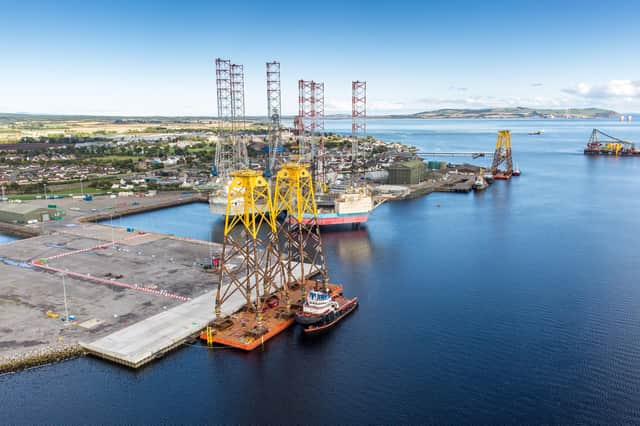Port of Cromarty wind farm tie-up could create 500 jobs in Highlands


The agreement would see French-headquartered Ideol and its future local construction partners use the port’s berthing sites and cooperating towards further developing the area to establish a manufacturing yard for floating wind tenders.
Bosses believe that the deal could lead to the creation of “well in excess of” 500 construction jobs. It would provide a boost for a sector beset by challenges of late, including concerns surrounding the BiFab yards.
Advertisement
Hide AdAdvertisement
Hide AdThe news also comes after the UK government set out a ten-point plan to boost jobs and drive the shift towards cutting emissions to net zero by 2050.
Port bosses said that besides business opportunities for local suppliers, manufacturing undertaken at the site would call upon “time-tested and proven” concrete construction methods and create a mix of skilled and semi-skilled work in the Highlands.
Ideol has teamed up with Elicio, an offshore wind farm developer and operator in the Belgian area of the North Sea, and BayWa Re, the global renewable energy business with a presence in Scotland, to submit proposals for a tender launched by Crown Estate Scotland.
The partnership is said to be a “huge vote of confidence” in the port’s ability to help support a multi-billion-pound expansion of wind power off the Scottish coast.
Port chief executive Bob Buskie said: “This partnership shows the vital manufacturing role the port can play in the rapid expansion in renewable projects off Scotland’s shores.
“We have some of the best marine resources in the world and are in close proximity to around 14 of the 15 areas identified in the Crown Estate Scotland’s marine plan for offshore wind development.
“This agreement is a significant boost to the long-term future of the port, Invergordon and the Highlands, as it looks to capitalise on the transformation of the energy market from oil and gas to renewables.”
Ideol chief executive Paul de la Gueriviere added: “This agreement is testament to our vision to build our floaters as close as possible to the offshore installation sites.”
A message from the Editor:
Thank you for reading this article. We’re more reliant on your support than ever as the shift in consumer habits brought about by coronavirus impacts our advertisers. If you haven’t already, please consider supporting our trusted, fact-checked journalism by taking out a digital subscription: www.scotsman.com/subscriptions
Comments
Want to join the conversation? Please or to comment on this article.